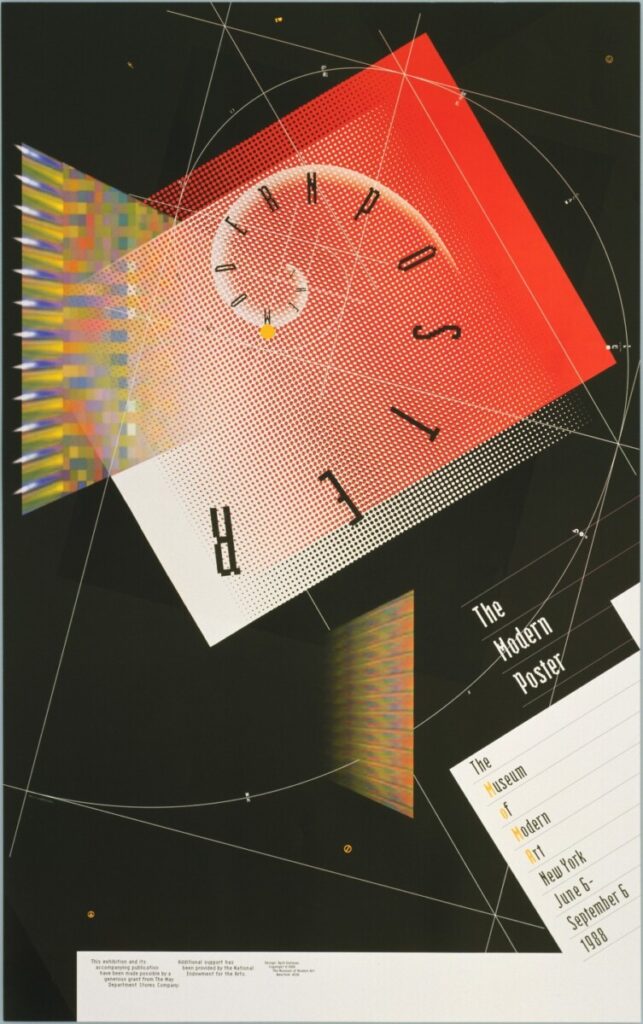Katherine McCoy and David Frej “Typography as Discourse” 1988 found in our main text Graphic Design Theory: Readings From the Field by Helen Armstrong.
- Find 2 examples of the work of postmodern graphic designers from the 1980s.
- Deconstruct the work. Explain which visual elements are associated with postmoderism of the 1980s and why.
- What does the author mean by “Typography as discourse”?
- What does the author mean when she states that “…no longer are there one-way statements from designers. The layering of content, as opposed to New Wave’s formal layering of collage elements, is the key to this exchange. Objective communication is enhanced by deferred meanings, hidden stories, and alternative interpretations”


Two examples of work made by postmodern graphic designers from the 1980’s is “The Modern Poster, The Museum of Modern Art, New York, 1988” by April Greiman. “ The Graduate Program in Design, 1989” By Katherine McCoy
In April Greiman’s work, she plays with text, the alignments and placements. She used saturated colors. In Katherine McCoy’s work, the text is over small text. There are some tight leading between the two texts. Saturated colors are used and there are layered images and textures behind the text. She also used different typographic weights on the texts.
I think the author means by Typography discourse that typography is used as a way to communicate with the audience. Typefaces have personality. An example would be serifs are considered to be traditional, while san-serifs are considered as modern. These two are complete opposites and depending on the design you make with text. The typefaces you use plays a role in how you want the audience to perceive the message in the design.
From what I’m trying to understand based on the quote the author has said is that designers have different mindsets or opinions of the things they view. So a designer’s objective communication can be based on the type of audience they want to resonate with. Depending on the designs they make, it’s based on their feeling on the subject. So it’s about expression over style, but use the style that they were inspired by to create personal pieces or designs works.
Annotations:




Recent Comments